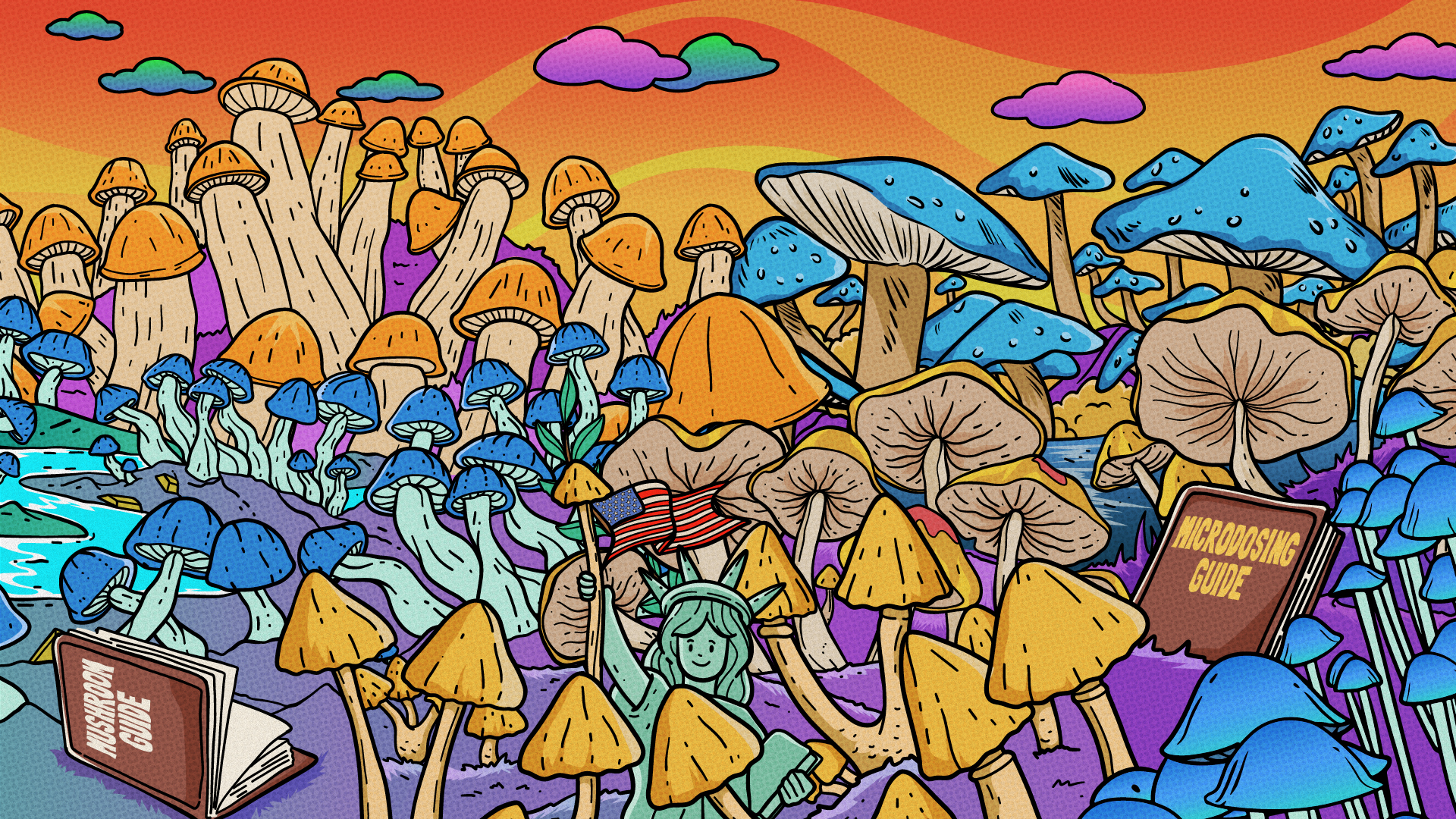Intention: To broaden understanding of the diverse world of magic mushroom strains and species, revealing their unique characteristics and potential experiences.
Approximately 14,000 mushroom species have been described around the world today. Of these 14,000, just over 180 of these mushrooms are psychoactive (that is, contain psilocybin). In this article, we’ll highlight the most common magic mushroom strains and species. As we’ll see, each species differs significantly in its appearance, distribution, habitat, potency, and potential dangers.
What Are Magic Mushroom Strains?
By and large, the majority of psilocybin mushroom species are concentrated in the Psilocybe genus, which contains approximately 117 species. Psilocybin mushrooms are also found in several other genera, including:
- Gymnopilus (13 species)
- Panaeolus (7 species)
- Copelandia (12 species)
- Hypholoma (6 species)
- Pluteus (6 species)
- Inocybe (6 species)
- Conocybe (4 species)
- Agrocybe (1 species)
- Galerina (1 species)
- Mycena (1 species)
The magic mushroom strains belonging to these genera are mostly found in tropical and subtropical fields and forests. Broadly speaking, they can be found on every inhabitable continent in a large variety of habitats, from the urban lawn to the most humid of jungles.
Each species will give rise to its own distinct shroom trip, due to its unique genetics and alkaloidal profile. Further, the potency of magic mushroom strains can vary from batch to batch within the same species. This is partly due to differences in growing conditions. Taken together, all magic mushroom species contain varying levels of psilocybin, psilocin, baeocystin, and norbaeocystin.
Mycologists have characterized and genetically isolated hundreds of subspecies, or “strains.” Most magic mushroom strains are different varieties of Psilocybe cubensis, the so-called “commercial Psilocybe.” This is because P. cubensis is by far the most commonly cultivated species. As a result, dozens of unique strains have come about over the years. Many psychonauts claim that “a cube is a cube” in terms of their effects. However, these magic mushroom strains can vary in their potency, appearance (hello Jack Frost), growing requirements, and overall yields.
Most Popular Magic Mushroom Strains
In this section, we will overview the most popular magic mushroom strains and species, with a particular focus on Psilocybe species.
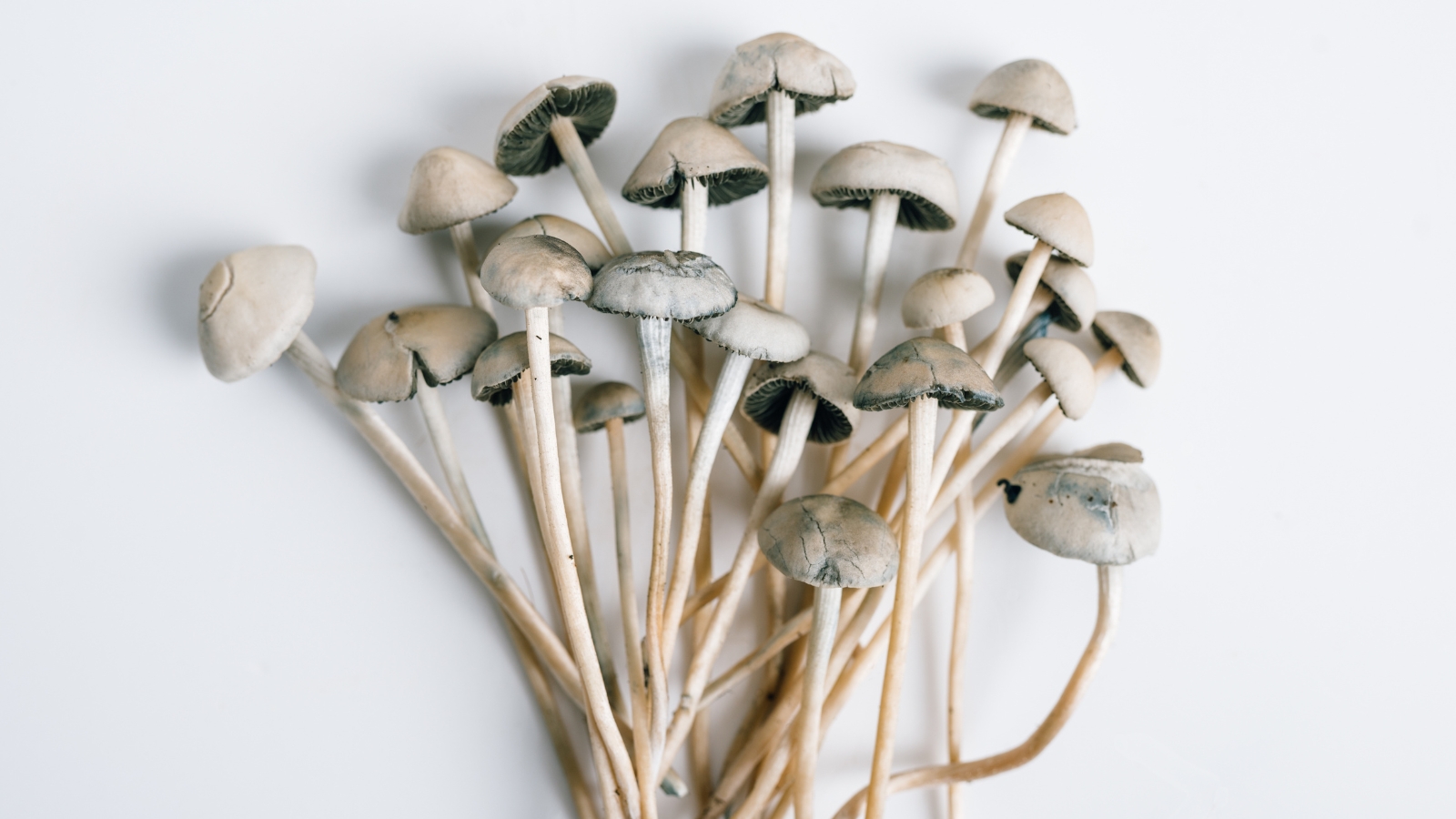
Panaeolus cyanescens (Blue Meanies)
Also known as Copelandia cyanescens, Panaeolus cyanescens is a potent psilocybin mushroom originating in Asia. In addition to the moniker of Blue Meanies, they’re also known as Hawaiian magic mushroom strains. This is because they grow abundantly on the island as a result of frequent rain and habitable cattle pastures.
Overview/Description
P. cyanescens has a convex cap that’s initially light brown, lightening to gray or off-white at maturity. The center of the cap remains yellowish-brown into old age. The pale-yellowish stem is 8.5–11.5 cm long. Like many Psilocybe species, both the stem and flesh bruise bluish because of its high psilocin content.
Where It’s Grown
Similar to P. cubensis, P. cyanescens is a dung-loving species that is found in pastures and fields. In the United States, P. cyanescens grows in California, Hawaii, Alabama, Louisiana, Florida, Mississippi, Tennessee, and Texas. Worldwide, it is found in tropical and subtropical regions, including Mexico, Central Europe, Australia, New Zealand, South America, Central Africa, and Southeast Asia.
Common Effects and Strength
According to the mycologist Paul Stamets in his book Psilocybin Mushrooms of the World, Panaeolus cyanescens is considered “moderately potent.” One study from 1992 analyzed the psilocybin and psilocin content of P. cyanescens gathered from five locations around the world. It found, on average, 0.012–0.73% psilocybin and 0.025–1.30% psilocin. This mushroom produces a strong visual trip with deep euphoria and a clear head space.
Potential Dangers
Frequent use has been reported to cause a painful red rash around the neck, possibly from the urea content. In addition, large mushroom doses may result in loss of voluntary muscle function, which can produce panic in some users.
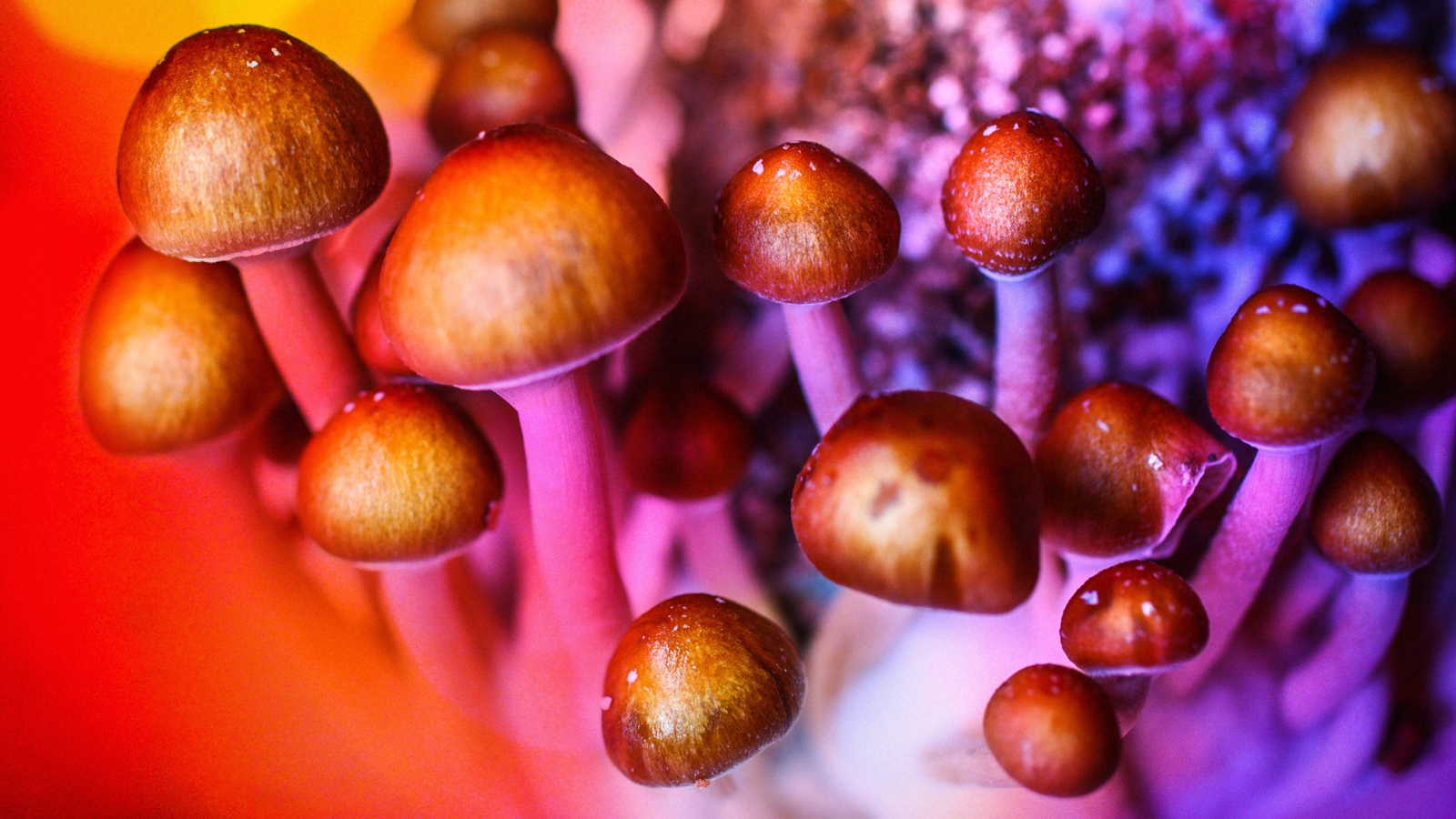
Psilocybe cubensis (Cubes)
Psilocybe cubensis, known commonly as cubes and Gold Cap shrooms, is the most well-known psilocybin-containing mushroom. The species was originally discovered in Cuba and later popularized by Terence McKenna, who called it the “starborn magic mushroom.” Dozens of P. cubensis strains are marketed today. Some of the most popular include:
Overview/Description
P. cubensis has a reddish-brown cap that is convex and bulbous when young. The cap becomes flat with age and lightens to a light brown color. The stems can grow up to 20 cm (8 inches) long, making it the largest psilocybe species. Like the cap, the stem will bruise bluish when injured.
Where It’s Grown
P. cubensis is widely distributed in tropical and subtropical regions around the world. It’s found in the southeastern United States, growing on cattle dung and well-managed land. Around the world, it’s found in Central and South America, Mexico, Cuba, and parts of Asia and Australia. Since it’s forgiving of suboptimal growing conditions and gives great yields, it is the most commonly cultivated psilocybin mushroom.
Common Effects and Strength
Cubes are moderately potent, containing 0.14–0.42% psilocin and 0.37–1.30% psilocybin in the whole mushroom. Regardless of the specific magic mushroom strain, it can generate a full-spectrum psilocybin experience consisting of synesthesia, time distortion, closed and open-eye visuals, euphoria, and heightened emotions.
Potential Dangers
As is true for all other Psilocybes, set and setting is paramount to a good experience with gold caps. Also, although the spores are legal for “microscopy purposes,” cultivating your own cubes may carry significant legal risks.
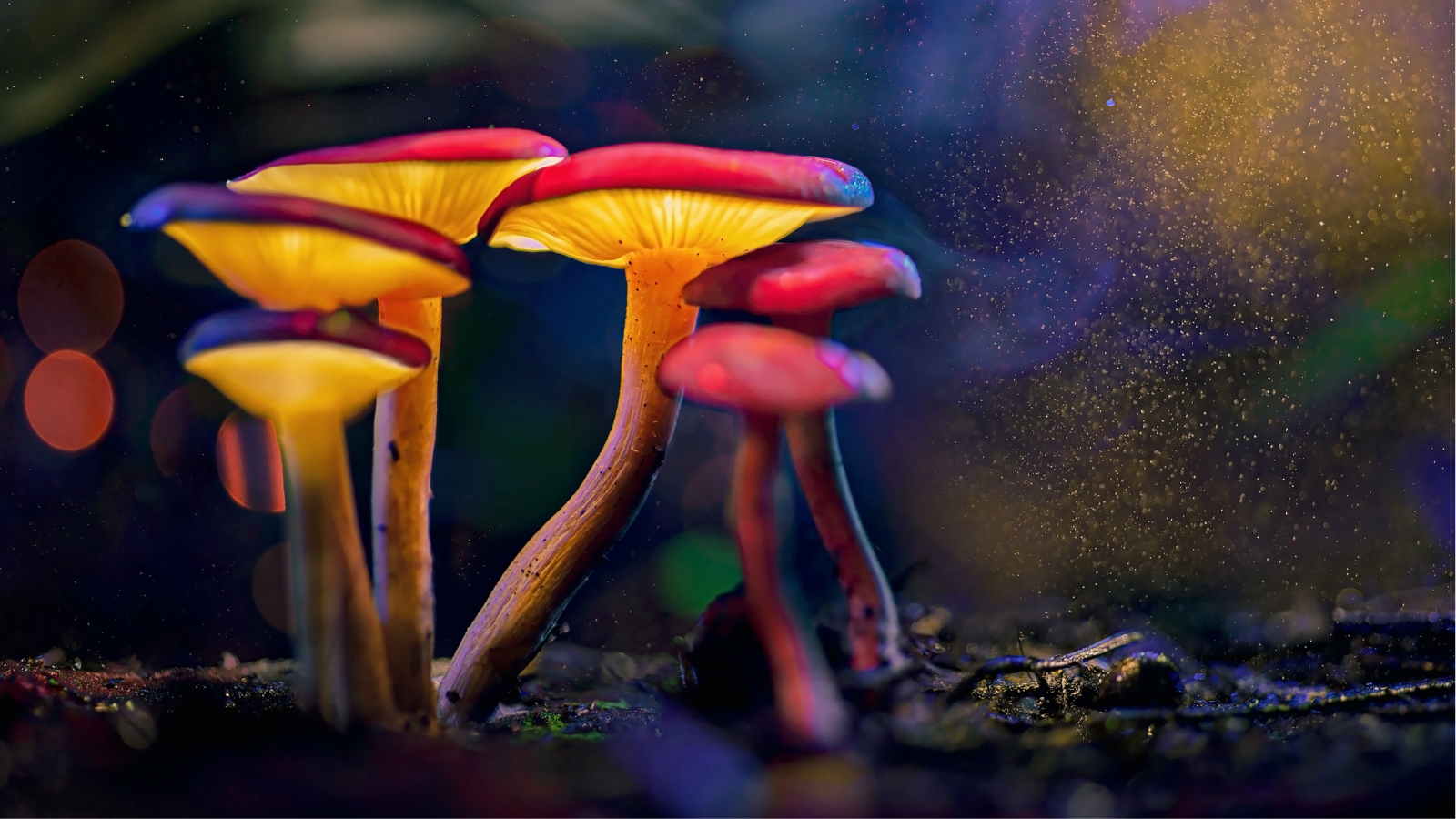
Psilocybe azurescens (Flying Saucer)
Also known as Flying Saucers or Azzies, P. azurescens is the strongest psilocybin-containing mushroom that grows in the wild. Reportedly, the species was first found by Boy Scouts while they were camping in Oregon in 1979. It was formally discovered and named by Paul Stamets.
Overview/Description
P. azurescens has a caramel-colored cap that’s initially convex but expands to be flat with age. In the middle of the cap is a pronounced nipple-like umbo. Its white stem can grow to be up to 20 cm long, making it one of the largest Psilocybes. Another indicator you’re in the presence of P. azurescens is its very strong bluing reaction. The flesh will bruise a very dark bluish-black when damaged.
Where It’s Grown
While commonly cultivated in many parts of the world, you can find “Azzies” in the wild on the west coast of the United States. This includes parts of Oregon, Washington, and northern California. They’re particularly widespread along the northern Oregon coast near Astoria. Their preferred habitats are decaying wood chips, dune grasses, and sandy coastal soils. Being fairly temperature resistant, they’ll start fruiting in late September and can be found as late as January.
Common Effects and Strength
P. azurescens is extremely potent, up to three times as potent as P. cubensis. According to Stamets, it contains up to 1.78% psilocybin, .38% psilocin and .35% baeocystin, making it one of the most potest magic mushroom strains. Owing to their high levels of psilocybin, they’re known to retain potency for long periods of time, even after months of storage. In terms of effects, just one dried gram can be an intense entheogenic experience. For this reason, it is a popular microdosing species because so little is needed for the benefits.
Potential Dangers
P. azurescens is known to have the undesirable side effect of creating temporary paralysis. This effect can last into the next day, which may cause anxiety and paranoia. It’s best to start with a low dose to gauge Azzie’s effects, or you may be in for an unexpectedly intense experience. In Michael Pollan’s book How to Change Your Mind, Stamets tells Pollan, “I find azzies almost too strong.”

Psilocybe caerulescens (Landslide Mushrooms)
In 1923, Landslide Mushrooms (known as derrumbe in Spanish) were first discovered growing on sugarcane mulch near Montgomery, Alabama. However, the human use of these shrooms extends far back beyond the 20th century. This species was used by the Aztecs for its entheogenic effects, and more recently, by the Mazatec in southern Mexico. P. caerulescens was the magic mushroom strain given to R. Gordon Wasson by the famous Mazatec shaman Maria Sabina, an experience he later wrote about in Life Magazine.
Overview/Description
P. caerulescens has a convex cap that can vary in color from yellowish-brown to reddish-brown. Its cap color lightens around the margins. In addition to its bluing reaction, it has a unique silvery-blue metallic luster that can help in its identification. Of all magic mushroom strains, these ones are on the shorter side, with a stem between 4–12 cm long.
Where It’s Grown
In the United States, you can find this mushroom in southern states like Alabama, Georgia, and South Carolina. It also grows throughout the central regions of Mexico, Venezuela, and Brazil. The magic mushroom strains usually fruit in clusters from late spring to early summer. They typically prefer soil with woody debris, where there aren’t any plants around.
Common Effects and Strength
Landslide mushrooms have a low-to-moderate potency, making them an ideal species for unseasoned mushroom voyagers. The main effects typically last 3–6 hours and produce euphoria, open and closed-eye visuals, time distortion, and altered perspective.
Potential Dangers
Like other Psilocybes, this species has the potential to create negative effects such as panic attacks, paranoia, anxiety, and nausea. Despite its lower-than-average potency, set and setting still very much determines the trip quality.

Psilocybe caerulipes (Blue Foot Mushroom)
P. caerulipes is widely distributed, but is still considered a rare psilocybin mushroom. It is known commonly as the Blue Foot mushroom because of the bluish hues at the base of its stem. Although growers cultivate this species, the spores are reportedly difficult to acquire.
Overview/Description
P. caerulipes is one of the smaller magic mushroom strains, with a stem length of only 3–6 cm. It has a cinnamon-brown cap that is convex to plane with a slight umbo. The flesh shows a mild bluing reaction, which can take a few hours to appear.
Where It’s Grown
You can find this species in the midwestern and eastern US. It grows as far north as Nova Scotia, Canada, and as far south as North Carolina. It fruits from May to December in deciduous forests, usually around decaying hardwood logs and woody debris along river systems.
Common Effects and Strength
Although its small size may suggest otherwise, P. caerulipes is about as potent as the much larger P. cubensis. Its potency is known to vary widely among samples, so it’s best to start small—just 1–3 g could be a strong experience with these magic mushroom strains.
Potential Dangers
The potential dangers, apart from psychological precautions, are related to identification in the wild. These mushrooms can be confused with other LBMs, or “little brown mushrooms.” Some of the non-Psilocybe LBMs can be poisonous—or even deadly.

Psilocybe cyanescens (Wavy Caps)
P. Cyanescens, known commonly as Blue Halos and Cyans, is a potent psilocybin mushroom first described in the 20th century by a British mycologist named Elsie Maud Wakefield. The species name cyanescens means “turning blue,” indicating its strong bluing reaction.
Overview/Description
Wavy Caps have an undulating cap margin, hence its common name. The cap is chestnut-brown when young, and becomes caramel-colored as it matures. The white stem is 2–8 cm long and bruises a deep bluish color.
Where It’s Grown
P. cyanescens grow abundantly in the Pacific Northwest, particularly in the fall or early winter when the temperatures drop to 50–65°F. Along the west coast, it grows as far south as San Francisco, and as far north as Alaska. Around the world, it grows in temperate regions of Europe, including the UK, Italy, Germany, Spain, and Sweden. In addition, you can find it in New Zealand and parts of West Asia.
This species grows in large clusters, preferring to feed on decomposing forest matter. It prefers wood chips, sawdust, and debris fields littered with rotting wood. According to Stamets, it also grows under mixed woods at the edges of lawns, along wood chip trails, and in heavily mulched gardens in urban areas.
Common Effects and Strength
P. cyanescens is highly potent; in fact, it’s commonly known as the “potent Psilocybe.” It has a maximum of 1.68% psilocybin and 0.28% psilocin. Many people report needing half the dosage of what they normally take of P. cubensis. “Cyans” produce a trip that is highly visionary, euphoric, and introspective.
Potential Dangers
There are some dangerous lookalikes that can make gathering in the wild risky without an experienced mycologist. This includes Pholiotina rugosa and Galerina marginata, both of which contain deadly amatoxins.
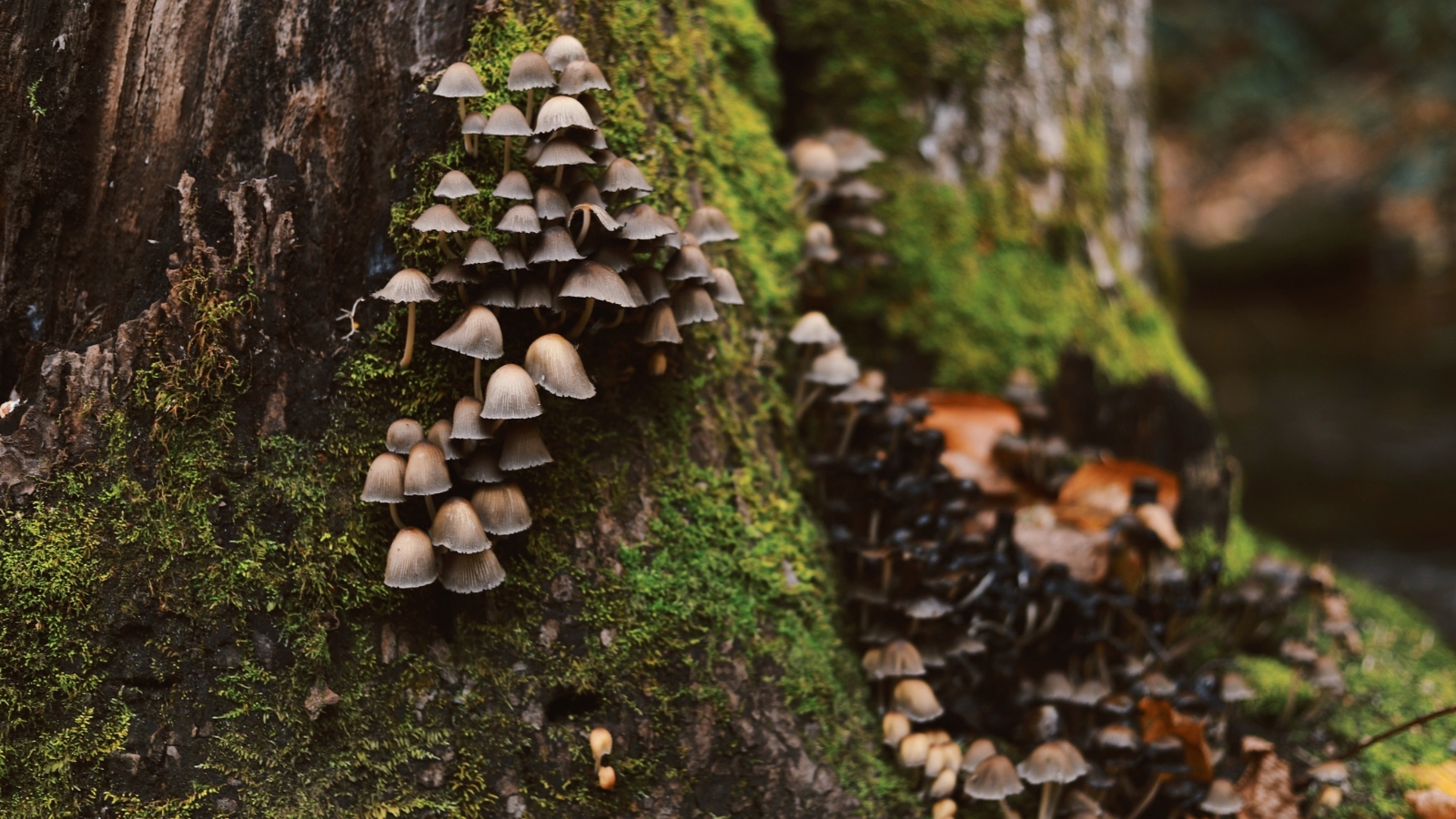
Psilocybe semilanceata (Liberty Caps)
The magic mushroom strain P. semilanceata is one of the most widely distributed Psilocybes. It is also responsible for one of the earliest recorded psilocybin mushroom trips. In 1799, a family in London accidentally prepared an entheogenic meal with mushrooms they’d collected in London’s Green Park.
Overview/Description
Liberty Caps closely resemble both P. strictipes and P. mexicana. They have a bell-shaped cap with a pronounced umbo. The cap color ranges from chestnut brown (when moist) to light tan or yellow (when dry). Often, it has an olive tint that can help identify it. At just 4–10 cm long, the stem is small and slender. Both the stem and flesh rarely bruise bluish, since this species has low levels of psilocin.
Where It’s Grown
You can find this species growing alone or in tight groups in pastures, fields, lawns, and grassy areas in general. Rather than dung, this mushroom’s mycelium feeds off decaying grassroots. Liberty caps have a wide distribution, as they grow in at least 17 countries. On the west coast, you can find them growing from northern California to British Columbia, usually in the fall or early winter. In other parts of the world, they grow in temperate grassland habitats. You can find them distributed over a handful of European countries, Chile, northern India, and South Africa. P. semilenceata also grows in a few oceanic countries, including Australia and New Zealand.
Common Effects and Strength
Liberty Caps are highly potent—the 4th most potent entheogenic mushroom, according to Stamets, who did a potency analysis of 12 popular Psilocybe magic mushroom strains. The mycologist and chemist, Jochen Gartz, reported 1% psilocybin on average, with a range of .2–2.37%. Cultivated Liberty Caps have less psilocybin, up to 1.12%, and no psilocin. You can expect a full-fledged trip with Liberty Caps, including visual distortions, hallucinations, euphoria, and deep spiritual journeys.
Potential Dangers
To the untrained eye, P. semilanceata looks similar to several poisonous species, particularly the deadly Galerina species, which can coexist in similar habitats. It also resembles Inocybe geiophylla, a toxic species that contains muscarine.
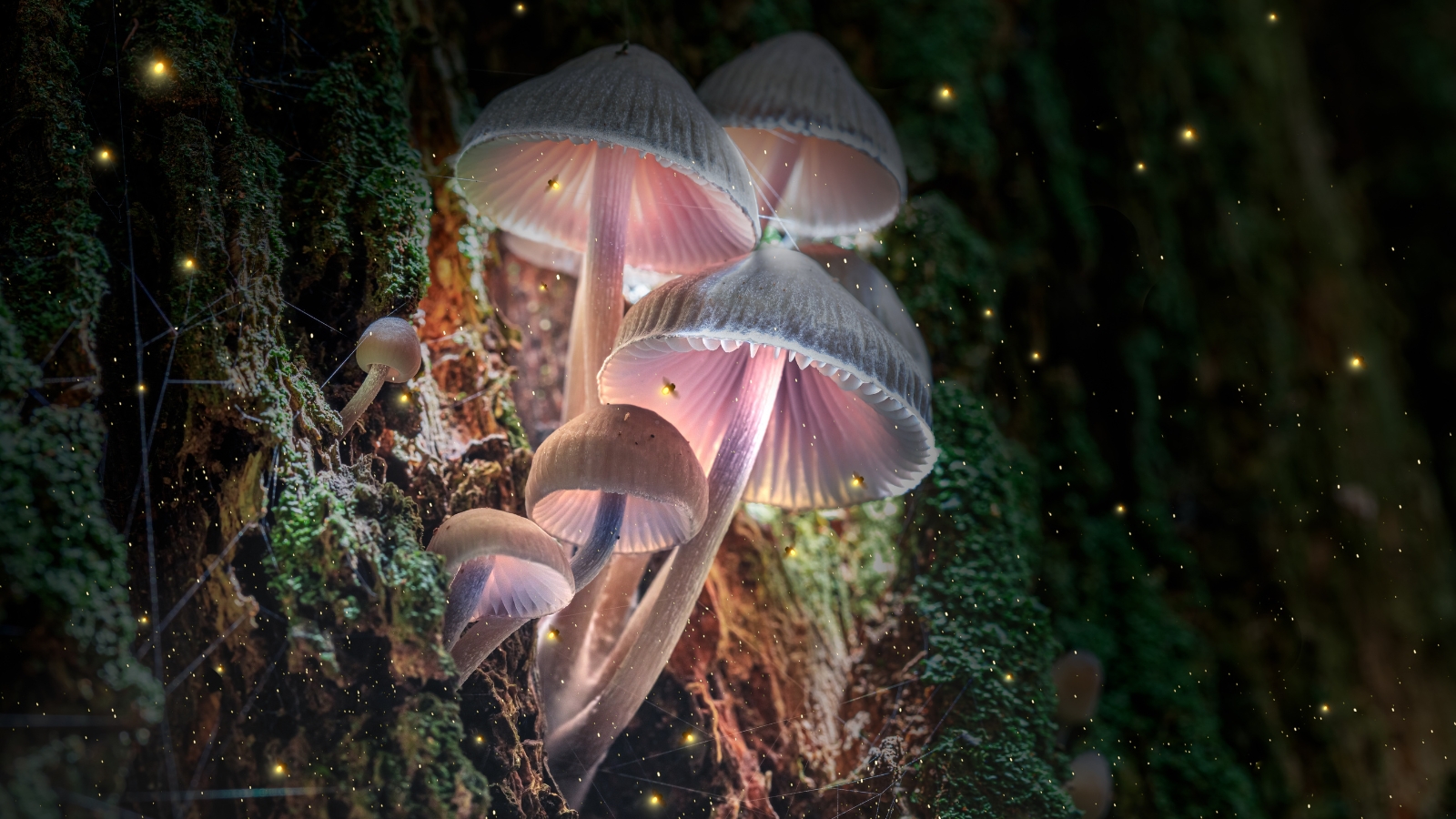
Psilocybe mexicana (Teonanacatl)
P. mexicana is a magic mushroom strain that has a deep history that dates back several millennia. The Aztecs used this species ceremonially before the Spanish conquered the empire. The Aztecs referred to them as teonanacatl, or “flesh of the gods.” In modern times, this was the species that Roger Heim, the French botanist, sent to Albert Hofmann, from which Hofmann then isolated and named the compounds psilocybin and psilocin. Today, they’re commonly known in Mexico as pajaritos, meaning “little birds.”
Overview/Description
Stamets refers to this species as the “Mexicana liberty cap” since it looks very similar to P. semilanceata. The bell-shaped cap often has rippled edges that fold inward toward the margins. The cap is brownish to deep orangish-brown, usually with a slight umbo. The hollow and pale yellow stem is 4–12.5 cm long. Like the flesh, it bruises bluish when injured.
Where It’s Grown
This species is found at high elevations (1000–1800m) in Mexico, Costa Rica, Guatemala, and Florida. It grows alone or in small groups, usually in humid meadows, moss, deciduous forests, and soils rich in manure. In the wild, it fruits from May to October, but it’s also easily cultivated indoors.
Common Effects and Strength
P. mexicana is considered moderately potent. It will produce a euphoric, light visual trip ideal for self-discovery. When Heim and Hofmann analyzed its potency, they detected 0.25% psilocybin and 0.15% psilocin. However, its potency is known to vary widely, depending on growing and storage conditions. This species also grows sclerotia (truffles), which are less potent than many magic mushroom strains.
Potential Dangers
Like other Psilocybes, the main dangers in vulnerable individuals are psychological in nature. Avoid P. mexicana if you have a history of severe mental illness or are taking antidepressants.
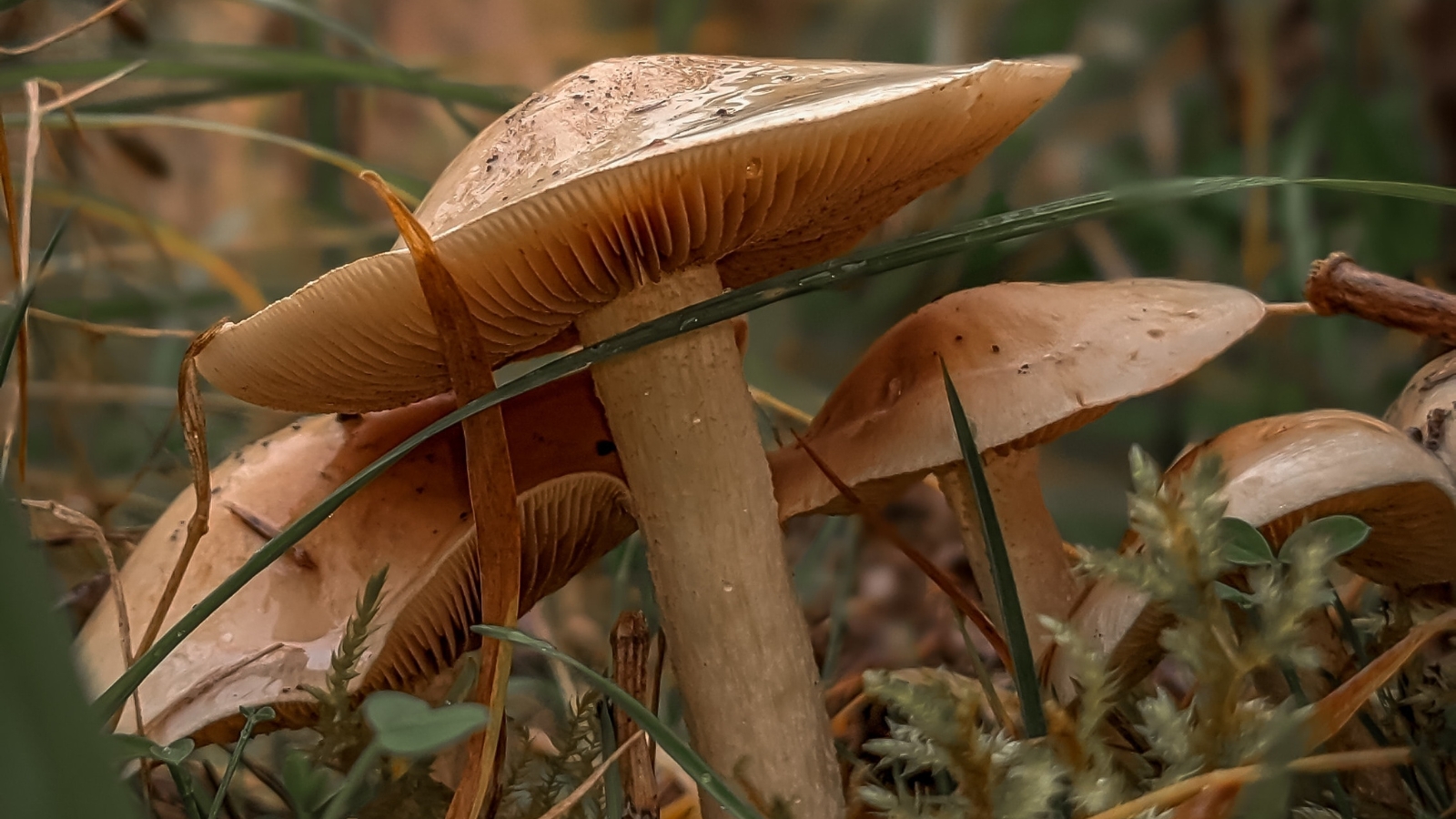
Psilocybe stuntzii (Blue Ringer Mushroom)
P. stuntzii, also known as “Stuntz’s Blue Legs” and Blue Ringer, were named after the mycologist Daniel Stuntz. Stunz originally found this rare species growing on the University of Washington campus.
Overview/Description
P. stuntzii can be identified from its whitish partial veil that bruises bluish, and its dark chestnut brown cap. The cap margin is sometimes spotted with an olive-green tinge. The yellowish stem is 3–6 cm long and also bruises bluish.
Where It’s Grown
P. stuntzii is distributed mostly in the western region of the Pacific Northwest. This includes parts of Oregon, Washington, and British Columbia, “within 90 kilometers of coastal regions,” according to Stamets. It fruits from late summer until the first frost, but it can be spotted year-round in the Seattle area. It typically grows in big clusters in wood chips and bark mulch and in soils rich in woody debris. According to Stamets, they also grow in newly placed lawns and fields, along roads, and in gardens.
Common Effects and Strength
P. stuntzii is considered weak to moderately potent, but it’s still capable of producing a typical psilocybin experience. In 1982, Beug and Bigwood reported a psilocybin content of 0–.36% psilocybin and psilocin content of 0-0.12%.
Potential Dangers
Take special care when collecting this species in the wild. P. stuntzii closely resembles the deadly poisonous Galerina marginata. Several inexperienced collectors were poisoned from mistaking P. stuntzii for this species. Galerina is differentiated by its orangish-brown cap and rusty brown spores.
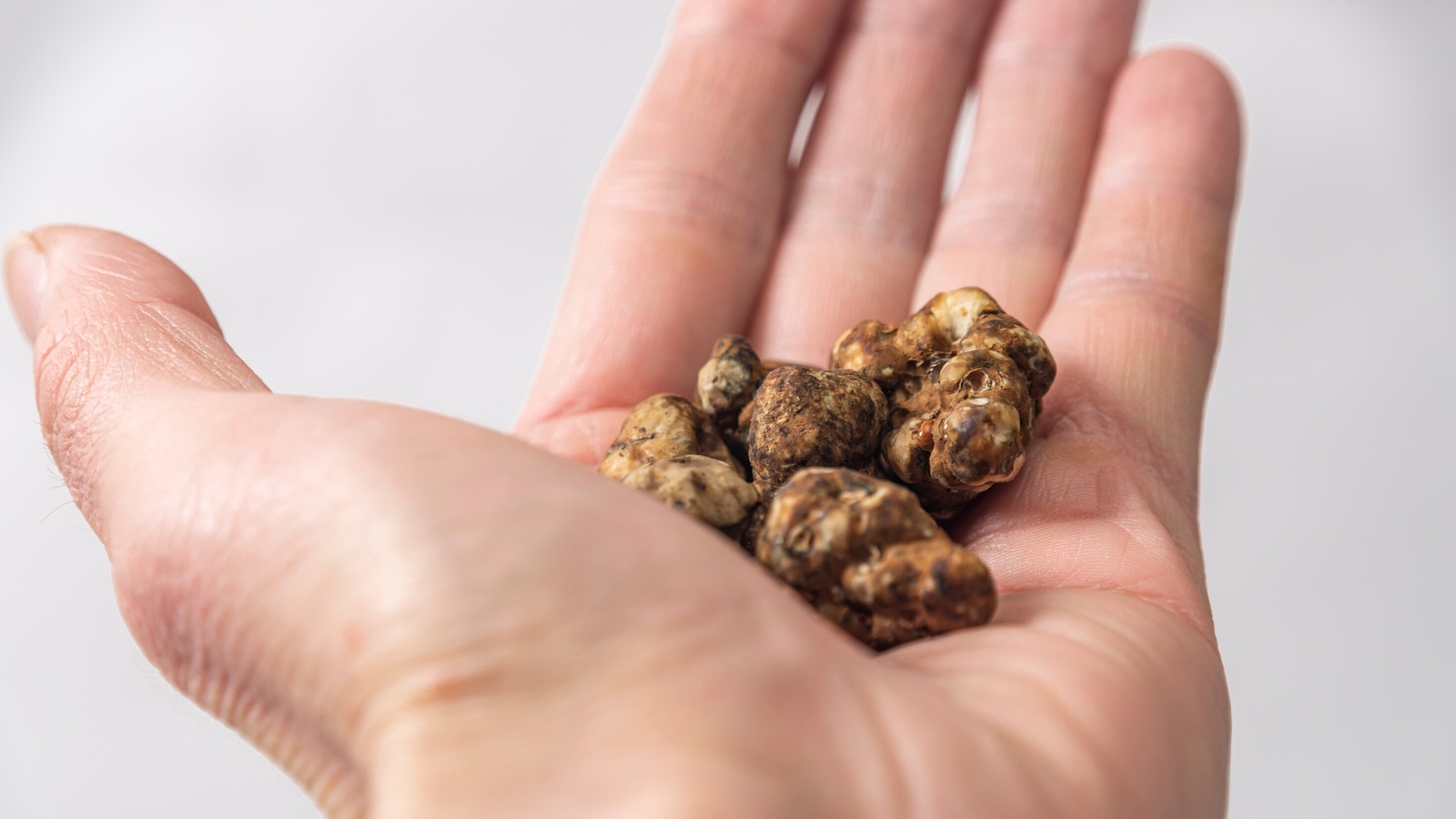
Psilocybe tampanensis (Philosopher’s Stone, Magic Truffles)
The species name Psilocybe tampanensis reflects where it was originally discovered in the 1970s, near Tampa, Florida, by the American mycologist Steven Hayden Pollock. Interestingly, all cultivated P. tampanensis trace back to a single culture he formed from a wild specimen that he’d collected in Florida. This species produces the famous magic truffles from its underground sclerotia. These are sold legally in the Netherlands in specialty shops as a result of a legal loophole.
Overview/Description
The yellow-brown cap is convex, expanding to be flat with maturity. The stem stands at just 2–6 cm tall, and bruises bluish. P. tampanensis has a taste and odor similar to freshly ground flour.
Where It’s Grown
P. tampanensis is a very rare psilocybin mushroom. This species has been collected in the wild only a few times, and so it survives through cultivation. It was originally found in Florida and later reported in Mississippi.
Common Effects and Strength
Philosopher’s Stone has a moderate potency compared to other magic mushroom strains, containing 0.68% psilocybin and 0.32% psilocin. The name aptly describes the effects, which are characterized by profound introspection, creative thinking, and philosophical insight. In terms of physical effects, it’s known for having a heavier body load and more nausea compared to other psilocybin magic mushroom strains.
Potential Dangers
The potential dangers of Philosopher’s Stone apply to all magic mushroom strains: be mindful of set and setting, and do not use them if you are taking certain medications or have a severe mental illness.
Contributing RS Author: Dylan Beard
Dylan is a freelance science writer and editor based in the beautiful Pacific Northwest. After finishing his physics degree and dabbling in neuroscience research at UC Santa Barbara in 2017, he returned to his first love—writing. As a long-term fan of the human brain, he loves exploring the latest research on psychedelics, nootropics, psychology, consciousness, meditation, and more. When not writing, you can probably find him on hiking trails around Oregon and Washington or listening to podcasts. Feel free to follow him on Insta @dylancb88
